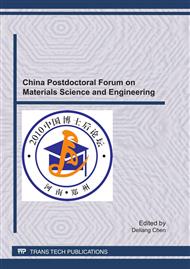p.93
p.98
p.102
p.106
p.110
p.114
p.118
p.122
p.126
Study on Carburizing and Quenching Cracks of Large Low-Alloy Gears
Abstract:
Technology and metallographic of three kinds of representative gears were analyzed in this paper according to characteristics of carburizing and quenching, and technology problems met with during the carburization process of large low-alloy gears in Citic Heavy Industries Co., Ltd were also taken into account. Three conclusions are demonstrated through experimental results. Firstly, although carburization technology is normal, grinding cracks can be caused by hard particles included in matrix. Secondly, if carbon concentration of carburization layer is too high or too steep in carburizing technology, carbide will aggregate in reticular or structural stress will not be average during the subsequent quenching technology. And therefore grinding cracks are caused. Moreover, retained austenite of surface layer and subsurface layer will be over standard and thus grinding cracks will be caused if quenching temperature is too high during quenching technology after carburizing.
Info:
Periodical:
Pages:
110-113
Citation:
Online since:
June 2011
Authors:
Keywords:
Price:
Сopyright:
© 2011 Trans Tech Publications Ltd. All Rights Reserved
Share:
Citation:


